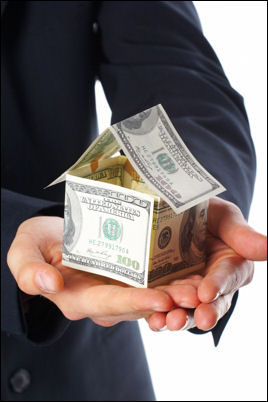Your Fixer-Upper Cash Flow
While there are some investors that pursue fixer-upper properties because they like the challenge, most are in it for one thing: the money. Getting the most out of your piece of real estate should be your only goal and should govern your actions well before signing on the dotted line or hammering down the first nail.
There are two distinct stages where overspending can ruin your chances of getting a profit out of your fixer-upper property and keeping a watchful eye on your own pocketbook during those two critical times will make all the difference between real estate flop and real estate profit. While the real estate transaction process will always have a lot of twists and turns, navigating properly through these two key times will help you out immensely and give you a positive real estate investing experience.
Make Your Purchase Price Make Sense
Though there will be many parts of the transaction you can use to improve your end profit, no time is more important than the purchase of your investment property. Doing the proper math on a particular property before ever even entertaining the prospect of purchasing it will lay out your potential profit and the sale price you need to achieve that level of success.
Many real estate investors tend to forget about extra fees that eat away at a profit margin like closing costs on both the purchase and sale of the home, real estate agent commission fees, and taxes that may need to be paid while you are in ownership of the property. All of these little costs add up to a big chunk of the potential selling price of your home and we have not even discussed the amount of money you’re going to put into the home through renovations.
The best way to determine your maximum purchase price is to work backward from the amount of money you hope to get out of the home, subtracting every cost you can think of, including your renovation expenses, to arrive at a purchase price for the property that makes the most sense for your investment plan. No one ever said real estate investing was easy, so prepare to make extensive plans if you want to pursue only the best opportunities.
Do Not Overdo Your Renovation
There is a great temptation amongst real estate investors, especially those new to the practice, to pour money into every aspect of a home to give it a completely new feeling and décor. While those types of things are nice, overspending on your renovation costs will eat away at your potential profit.
You must quickly decide what improvements will add real value to the home and which will only have the chance to add value for a particularly interested buyer. Concentrate on those things that appeal to all prospective home buyers. Bathrooms and bedrooms will always make a statement to a buyer but an asphalt driveway may not.
Further, you have to keep in mind that no renovation will ever go perfectly so building some cushion into your profit plan for unexpected minor increases in various parts of your project is a smart real estate investing practice. If costs escalate slightly, you will be able to absorb that cost and still hit your profit point. If they don’t, you have that much more breathing room when it comes to selling real estate.
By keeping a firm grasp on the money out of your pocket and into your fixer-upper, you can better control the profit you’ll see as you go to sell off your investment. By not overpaying and by making sure you don’t over-renovate the home, you can ensure yourself a smoother, more fulfilling, and more profitable real estate investing experience.

